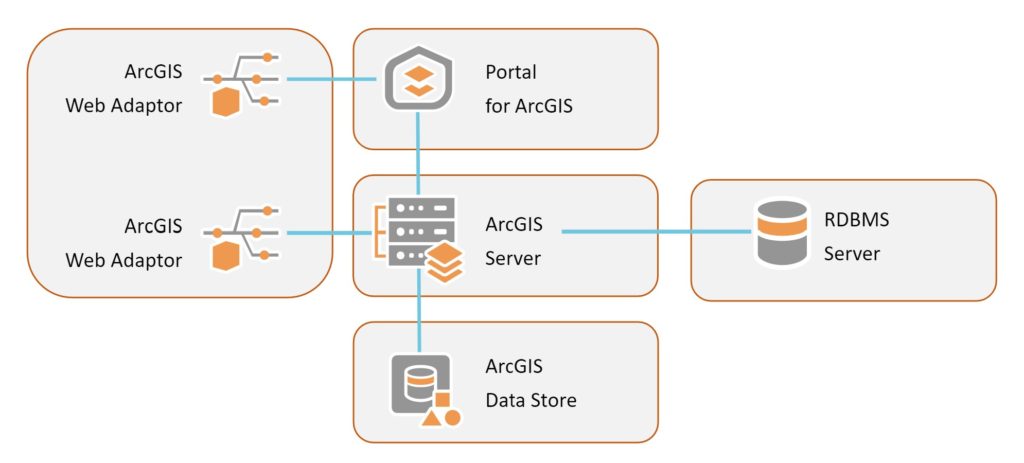As part of my role at GEO Jobe, I routinely install and configure the ArcGIS Enterprise platform. This consists of ArcGIS Server, Portal for ArcGIS, ArcGIS Data Store(s), and the Web Adaptors. One of things I get asked the most during these deployments is, “What ‘is’ the data store and do I need my RDBMS SDE database anymore?” The answer is yes! Before I dive into why, let me clear up some terminology.
What is an Enterprise Geodatabase?
This used to be referred to as the SDE Geodatabase. Now it’s called the enterprise geodatabase. This database is where an Organization’s GIS data lives. It’s typically managed in a RDBMS such as Microsoft SQL Server, Oracle, or PostgreSQL. This database is the master repository and the data source for all your authoritative map and feature services.
What is the ArcGIS Data Store?
The ArcGIS Data Store is a PostgreSQL database that runs “under the hood” of ArcGIS Enterprise. It’s managed by the software and does not have a UI to interact with it directly. It is for all intents and purposes, hands off. There are three types of ArcGIS Data Stores, relational, tile, and spatiotemporal. Regardless of type, the ArcGIS Data Store is where the ‘Hosted’ services data gets stored.

Now to further complicate matters. ArcGIS Server has a ‘data stores’ repository. In ArcGIS Server, ‘data stores’ refers to any location where GIS data is stored. It could be an enterprise geodatabase, file geodatabase, database, or cloud storage that is registered with ArcGIS Server. Click here for Esri’s description of data stores.
Hopefully these descriptions have helped clear up the difference of these two concepts. You may also now see why the enterprise geodatabase is still vitally important.
Circling back to my initial question, the ArcGIS Data Store is not a replacement for your SDE/enterprise geodatabase that you’ve been growing and managing in your RDBMS of choice. The ArcGIS Data Stores are behind the scenes databases that allow for full functionality of ArcGIS Enterprise. They are not databases where your authoritative GIS data should live.




